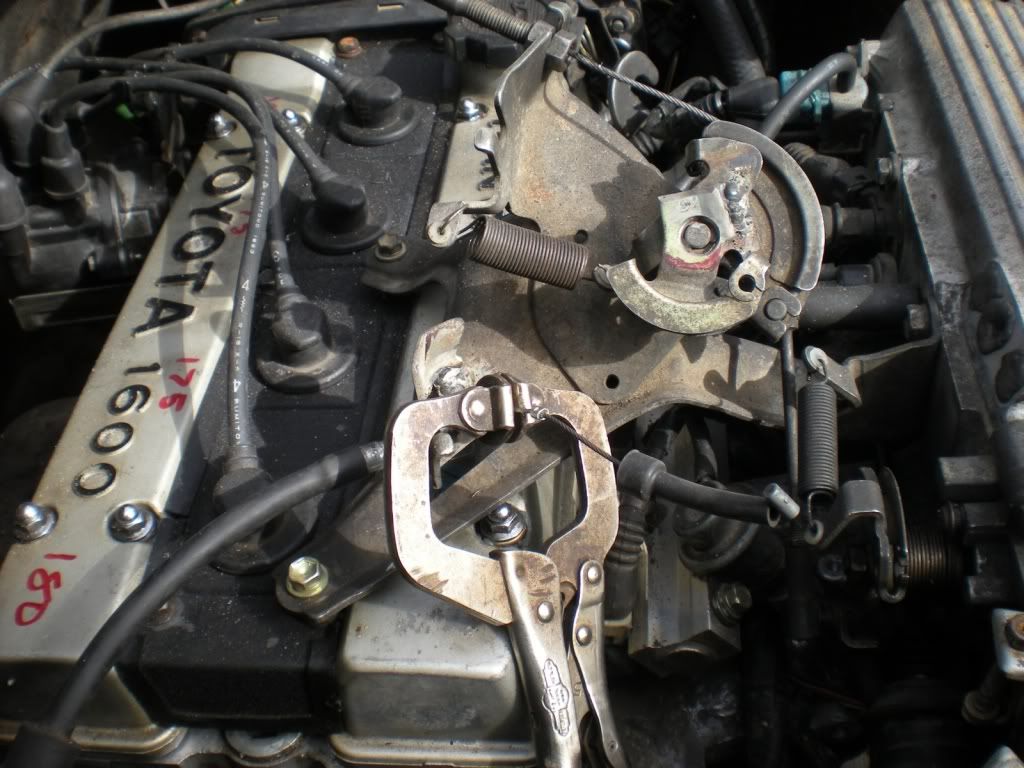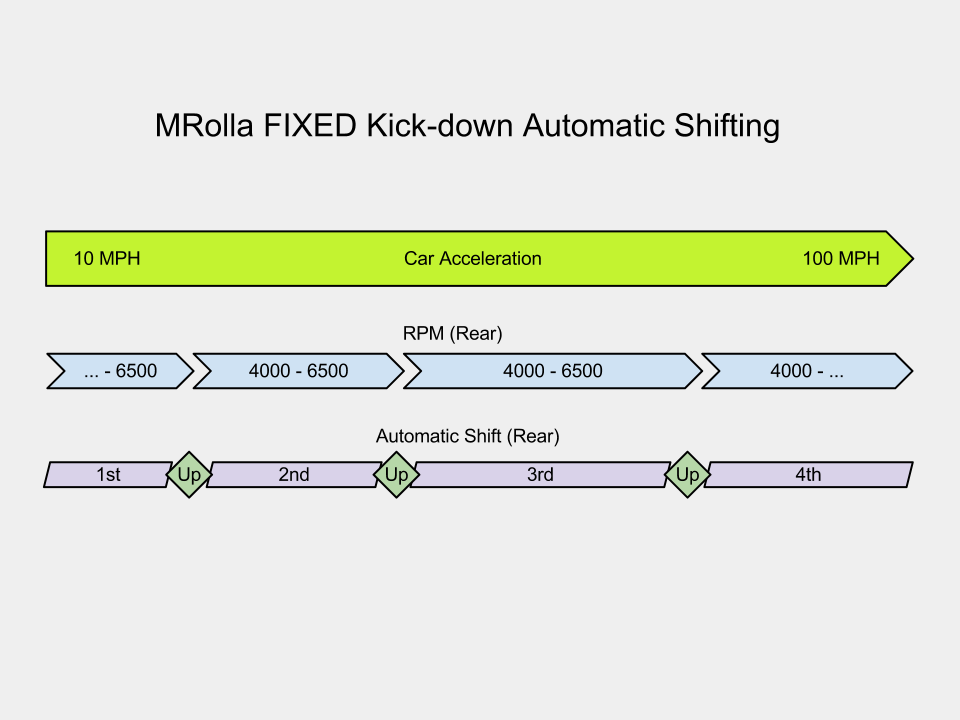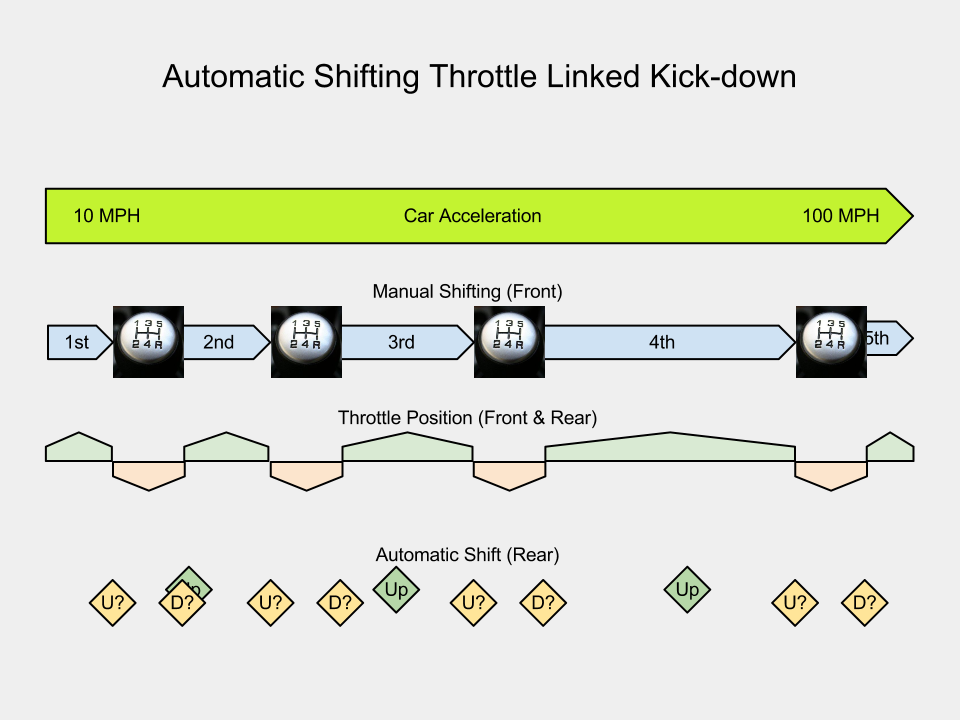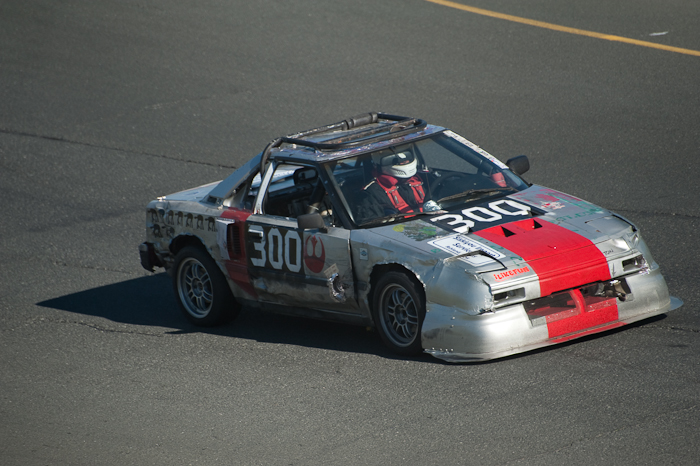First we considered possible combinations of manual and automatic transmissions. We were initially drawn to two manual transmissions, as are most people with opinions on the MRolla, but just under the surface of a seemingly simple concept lurk highly technical problems in control linkages and synchronization. Even if we had time, I'm not convinced there would be a racing-reliable way to execute dual manuals.
Two automatics would be easiest to execute, but was too... automatic for our tastes. With the lessons learned from the MRolla this far, I think dual automatics are quite feasible for endurance racing.
We chose to use one manual and one automatic transmission to simplify control and execution. We didn't really care which end had what, but Paul observed we could use the Corolla's pedals unmodified if we put the automatic on the rear MR2 engine. We like simple. Throttle cables for both engines are attached to the original Corolla pedal, allowing us to put the rear engine in drive and ignore it (until we need reverse), then drive "normally" using the Corolla's original controls. This has been successful on track for three endurance races so far.
 |
| Here you can see the dual transmission controls and instrument clusters. |
 |
| The picture is a little abstract but this is the top of the throttle pedal with both throttle cables attached. |
We figured out a way to electronically shift the automatic using multi-position switches, but didn't execute it. I envisioned a twist knob to shift the automatic, on top of the manual shift lever, so the driver could control both transmissions with one hand concurrently. Not only do I think this is feasible, but would top coolness charts. But meh... We found a quicker solution and so far: "Ain't borked. Don't fix".
We assumed manually controlling the automatic shift lever while operating the front transmission would be too complex and confusing, but it didn't take long for some drivers to start grabbing lower gears in the rear on certain hills and corners. Manually shifting automatic transmissions actually seems pretty feasible now. Since we wanted to simplify driving as much as possible, and maximize reliability of the rear engine and automatic transmission, we leave it in "D" by policy.
 |
| Here the kick-down cable is simply extended a few cm and clamped in position. |
 |
| This is not really directional. Shift points are the same whether increasing or decreasing speed. |
Above we see that with the kick-down cable fixed in
position, automatic shifting is a simple, nearly direct function of the speed
of the car. Whatever may be happening with the throttle pedal or the other
engine and transmission, the rear transmission keeps it's gear selection until
it hits the shift RPMs. Deceleration works the same way. For racing this automatic shifting is nearly as intuitive as manual, since you generally want to shift at a peak RPM to maximize power.
 |
| Here you see the throttle cable above, and kick-down cable below, are linked. |
 |
| Note the automatic transmission initiates 11 shifts compared to 3 with a fixed kick-down cable. |
Shift initiation (represented by diamonds on the bottom row) was now a function of car speed plus CHANGE in throttle position. For each manual shift of the front engine, the driver releases then engages the accelerator, causing the rear
automatic to disengage and initiate shifts twice. The normal automatic shift points due to acceleration are also in the mix. The automatic didn't have time complete many of these extra shifts before throttle pedal changed its
mind again. The results on track were frequent, incomplete, hard, clunky, and unnecessary
shifts, especially entering and exiting corners.
For the race we went back to the clamped kick-down cable, but at maximum pull. This pushed the shift point to about
6300 RPM. This high rear shift point had an unexpected affect: It put an unbalanced work load on the rear engine. Shifting the front, healthier engine was happening at 6000 RPM, or lower under relaxed conditions. Situations like coasting down The Carousel, we were idling the front engine, but flogging the rear engine. That engine had been past due for catastrophic
failure since we first welded a cage into the original V-RAM MR2, and had a long racing career of repeated over-heating since then. We ended up blowing the head gasket.
 |
| Finishing the race on a blown engine. Thanks to Judy Kiel for the photo. |








No comments:
Post a Comment